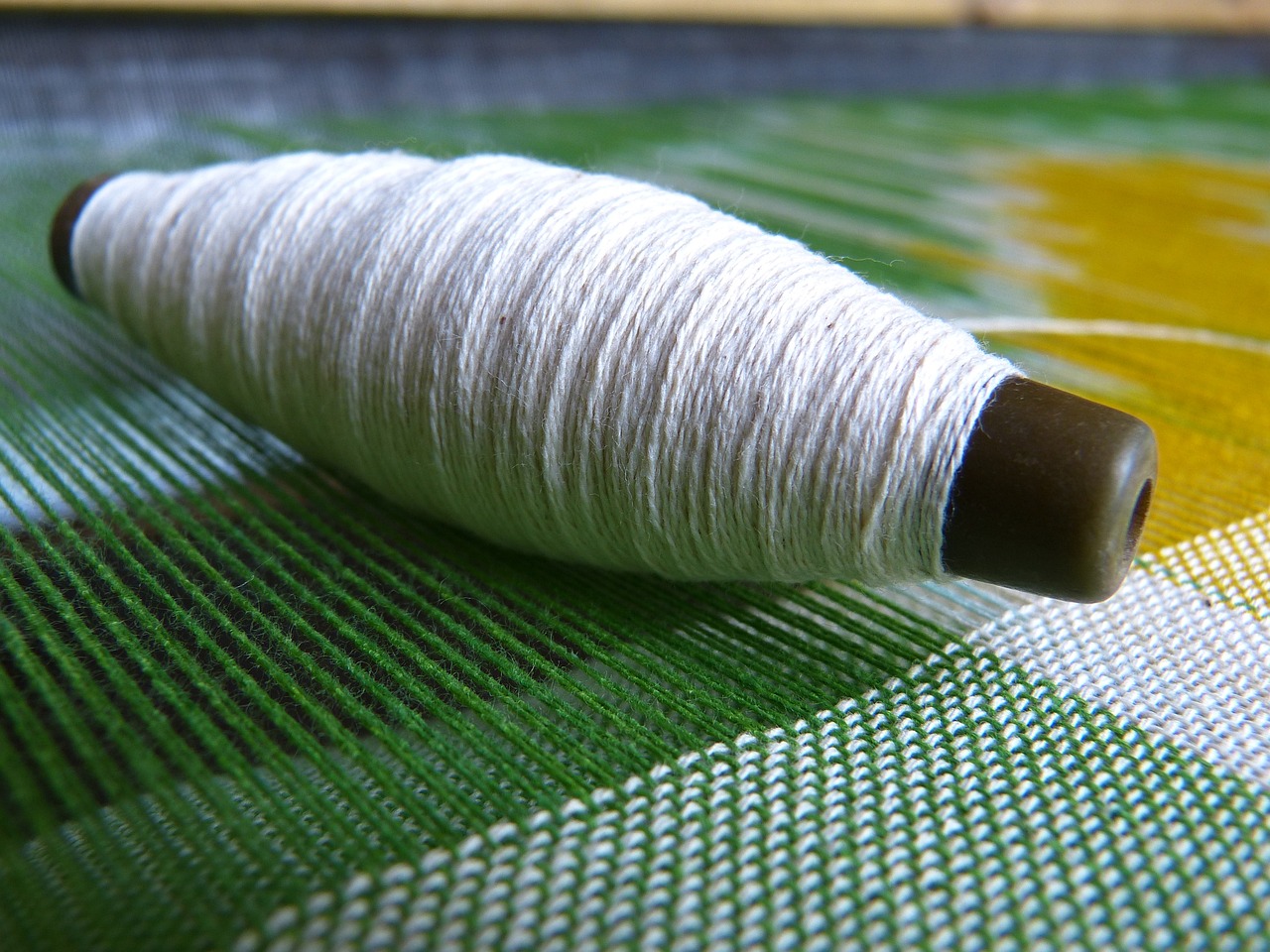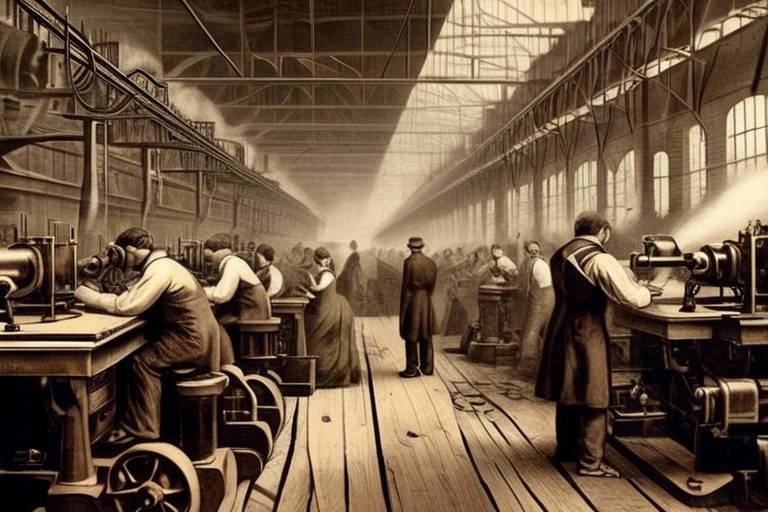The Role of the Silk Road in Cultural Exchange
The Silk Road was a vital network of trade routes connecting the East and West, facilitating not only the exchange of goods but also the interchange of ideas, beliefs, and cultures between diverse civilizations. This ancient network of routes was not merely a pathway for merchants to transport silk and spices; it was a conduit for the flow of knowledge, artistry, and traditions.
Historically, the Silk Road played a crucial role in shaping the course of history by fostering cultural interactions among civilizations such as the Chinese, Indian, Persian, and Roman empires. It served as a melting pot of diverse cultures, where ideas were shared, and innovations were exchanged, leading to the enrichment of societies along its vast expanse.
Trade along the Silk Road was not limited to commercial transactions; it encompassed the sharing of knowledge, technologies, and artistic influences. Merchants carried not only goods but also ideas that sparked creativity and innovation in various regions. The Silk Road was a marketplace of ideas where cultures mingled and evolved.
The Silk Road served as a conduit for the dissemination of religious beliefs, including Buddhism, Christianity, Islam, and Zoroastrianism. As traders traversed the routes, they brought with them not only commodities but also spiritual teachings, leading to the establishment of religious communities along the Silk Road. This exchange of beliefs contributed to the diversity and tolerance of religious practices in different regions.
Artistic styles and architectural techniques were exchanged along the Silk Road, resulting in a fusion of artistic traditions and the creation of unique cultural expressions in various regions. The blending of artistic influences gave rise to new forms of art and architecture that reflected the multicultural nature of the Silk Road.
The Silk Road facilitated linguistic exchanges, allowing for the spread of languages such as Arabic, Persian, and Sanskrit. Literary works and storytelling traditions were also shared, enriching the cultural tapestry of societies along the Silk Road. Language became a bridge that connected people from different backgrounds, fostering communication and understanding.
Technological advancements, such as papermaking, printing, and navigation tools, were shared along the Silk Road, leading to the diffusion of knowledge and the advancement of various scientific fields. The exchange of technologies not only enhanced trade but also contributed to the progress of civilization, laying the foundation for future innovations.
Social customs, traditions, and practices were shared and adapted along the Silk Road, influencing aspects of daily life, including food, clothing, rituals, and social hierarchies. The mingling of cultures led to the enrichment of social practices, creating a vibrant tapestry of customs and traditions that reflected the diversity of the Silk Road.
The legacy of the Silk Road continues to resonate in modern times, inspiring cross-cultural dialogue, fostering global connections, and highlighting the importance of cultural exchange in shaping our interconnected world. The spirit of the Silk Road lives on in the exchange of ideas, the celebration of diversity, and the promotion of mutual understanding among nations.

Historical Significance
The Silk Road was a vital network of trade routes connecting the East and West, facilitating not only the exchange of goods but also the interchange of ideas, beliefs, and cultures between diverse civilizations.
The historical significance of the Silk Road cannot be overstated. It played a crucial role in shaping the course of history by fostering cultural interactions among civilizations such as the Chinese, Indian, Persian, and Roman empires. The exchange of goods along the Silk Road not only enriched economies but also led to the sharing of knowledge, technologies, and artistic influences. This cultural exchange was like a grand symphony where different civilizations played their unique melodies, creating a harmonious blend of diversity.
Trade along the Silk Road was a vibrant tapestry of commerce, woven with threads of silk, spices, and precious metals. However, beyond the tangible goods, the Silk Road was a conduit for the exchange of ideas and innovations. It was a marketplace of not just products but also of knowledge, technologies, and artistic expressions. The Silk Road was more than a trade route; it was a bridge connecting distant lands and fostering a global community.
Religious beliefs traveled far and wide along the Silk Road, transcending geographical boundaries and cultural differences. Buddhism, Christianity, Islam, and Zoroastrianism found new followers and established vibrant communities along the routes of the Silk Road. The spiritual journey along these ancient paths was not just a pilgrimage but a testament to the power of cultural exchange in shaping religious identities.
The Silk Road was a canvas where artistic styles and architectural techniques were blended and transformed. The fusion of diverse traditions gave rise to unique cultural expressions in different regions, reflecting the beauty of cross-cultural pollination. The monuments and artifacts that dot the Silk Road bear witness to the creative synergy that flourished along its ancient pathways.
Linguistic diversity thrived along the Silk Road, as languages such as Arabic, Persian, and Sanskrit spread across continents, transcending borders and enriching cultural landscapes. Literary works and storytelling traditions were shared and adapted, creating a tapestry of narratives that transcended time and space. The Silk Road was not just a physical route but a highway of words and stories that connected distant lands.
Technological advancements were like sparks that ignited the flames of progress along the Silk Road. Innovations such as papermaking, printing, and navigation tools were shared and disseminated, transforming the way people lived and interacted. The exchange of knowledge along the Silk Road was a catalyst for scientific development, paving the way for future innovations and discoveries.
Social customs and cultural practices were like threads woven into the fabric of daily life along the Silk Road. From food and clothing to rituals and social hierarchies, the exchange of practices shaped the way people lived and interacted. The Silk Road was not just a route of goods but a pathway of traditions and customs that bound diverse cultures together.
The legacy of the Silk Road endures in the modern world, reminding us of the power of cultural exchange in shaping our interconnected global community. The spirit of the Silk Road lives on in cross-cultural dialogues, global connections, and the celebration of diversity. As we navigate the complexities of the modern world, the lessons of the Silk Road continue to guide us towards a future built on mutual understanding and respect.

Trade and Commerce
The Silk Road was a vital network of trade routes connecting the East and West, facilitating not only the exchange of goods but also the interchange of ideas, beliefs, and cultures between diverse civilizations.
The Silk Road was a bustling hub of trade and commerce that transcended mere transactions of goods. It was a melting pot of cultures, ideas, and innovations, where merchants not only exchanged silk and spices but also shared knowledge, technologies, and artistic influences.
Imagine a marketplace where merchants from distant lands bartered not only for goods but also for the latest advancements in science and art. The Silk Road was more than just a route; it was a crossroads of civilizations where ideas were as valuable as gold.
Merchants traveling along the Silk Road didn't just carry goods; they carried stories, traditions, and customs from their homelands. Each caravan was a mobile library of cultural exchange, where languages intertwined, and traditions merged to create a tapestry of diversity.
Through the Silk Road, the world saw the birth of globalization long before the term was coined. It was a highway of ideas, where the seeds of innovation were planted and nurtured, leading to a blossoming of creativity and collaboration across borders.
Trade along the Silk Road wasn't just about transactions; it was about transformation. The exchange of goods was merely the surface of a deeper connection that wove together the fabric of humanity, creating a rich tapestry of cultural exchange that continues to influence our world today.
- What were the main goods traded along the Silk Road?
- How did the Silk Road contribute to the spread of knowledge and technologies?
- What role did merchants play in facilitating cultural exchange along the Silk Road?
- Why is the Silk Road considered a symbol of cross-cultural dialogue?

Religious Spread
The Silk Road was a vital network of trade routes connecting the East and West, facilitating not only the exchange of goods but also the interchange of ideas, beliefs, and cultures between diverse civilizations.
The Silk Road played a crucial role in shaping the course of history by fostering cultural interactions among civilizations such as the Chinese, Indian, Persian, and Roman empires.
Trade along the Silk Road was not only about the exchange of goods like silk and spices but also involved the sharing of knowledge, technologies, and artistic influences.
The Silk Road served as a conduit for the dissemination of religious beliefs, including Buddhism, Christianity, Islam, and Zoroastrianism, leading to the establishment of religious communities along its routes.
Artistic styles and architectural techniques were exchanged along the Silk Road, resulting in a fusion of artistic traditions and the creation of unique cultural expressions in various regions.
The Silk Road facilitated linguistic exchanges, allowing for the spread of languages such as Arabic, Persian, and Sanskrit, as well as the transmission of literary works and storytelling traditions.
Technological advancements, such as papermaking, printing, and navigation tools, were shared along the Silk Road, leading to the diffusion of knowledge and the advancement of various scientific fields.
Social customs, traditions, and practices were shared and adapted along the Silk Road, influencing aspects of daily life, including food, clothing, rituals, and social hierarchies.
The legacy of the Silk Road continues to resonate in modern times, inspiring cross-cultural dialogue, fostering global connections, and highlighting the importance of cultural exchange in shaping our interconnected world.
Religion played a significant role in the cultural exchange facilitated by the Silk Road. The movement of people and goods along the trade routes not only led to the exchange of religious beliefs but also the establishment of religious communities in various regions. For example, Buddhism spread from India to East Asia through the Silk Road, while Christianity found its way to Central Asia and China. The Silk Road also played a pivotal role in the spread of Islam, connecting the Middle East with Central Asia and beyond. The interchange of religious ideas along the Silk Road contributed to the diversity and richness of religious practices in different parts of the world.

Art and Architecture
The Silk Road was a vital network of trade routes connecting the East and West, facilitating not only the exchange of goods but also the interchange of ideas, beliefs, and cultures between diverse civilizations.
The Silk Road played a crucial role in shaping the course of history by fostering cultural interactions among civilizations such as the Chinese, Indian, Persian, and Roman empires.
Trade along the Silk Road was not only about the exchange of goods like silk and spices but also involved the sharing of knowledge, technologies, and artistic influences.
The Silk Road served as a conduit for the dissemination of religious beliefs, including Buddhism, Christianity, Islam, and Zoroastrianism, leading to the establishment of religious communities along its routes.
Artistic styles and architectural techniques were exchanged along the Silk Road, resulting in a fusion of artistic traditions and the creation of unique cultural expressions in various regions.
The Silk Road facilitated linguistic exchanges, allowing for the spread of languages such as Arabic, Persian, and Sanskrit, as well as the transmission of literary works and storytelling traditions.
Technological advancements, such as papermaking, printing, and navigation tools, were shared along the Silk Road, leading to the diffusion of knowledge and the advancement of various scientific fields.
Social customs, traditions, and practices were shared and adapted along the Silk Road, influencing aspects of daily life, including food, clothing, rituals, and social hierarchies.
The legacy of the Silk Road continues to resonate in modern times, inspiring cross-cultural dialogue, fostering global connections, and highlighting the importance of cultural exchange in shaping our interconnected world.

Language and Literature
The Silk Road was not just a pathway for the exchange of goods; it was also a bustling thoroughfare for the transmission of languages and literary traditions. Imagine a vibrant marketplace where merchants barter not only silk and spices but also words and stories, creating a rich tapestry of linguistic diversity and literary heritage.
As caravans traversed the vast expanse of the Silk Road, languages such as Arabic, Persian, and Sanskrit flowed like rivers, mingling and merging to form new dialects and linguistic hybrids. This linguistic fusion not only facilitated communication among diverse cultures but also enriched the literary landscape of the regions it touched.
Alongside the linguistic exchanges, the Silk Road served as a conduit for the transmission of literary works and storytelling traditions. Imagine ancient manuscripts and scrolls changing hands at bustling marketplaces, carrying tales of heroism, romance, and wisdom across continents and civilizations.
The exchange of languages and literature along the Silk Road was not merely a transaction of words; it was a cultural dialogue that transcended boundaries and connected people through shared narratives and shared experiences. Just as silk threads are woven into intricate patterns, languages and literary traditions intertwined to create a vibrant tapestry of human expression and creativity.

Technological Innovations
The Silk Road was a vital network of trade routes connecting the East and West, facilitating not only the exchange of goods but also the interchange of ideas, beliefs, and cultures between diverse civilizations.
The Silk Road played a crucial role in shaping the course of history by fostering cultural interactions among civilizations such as the Chinese, Indian, Persian, and Roman empires.
Trade along the Silk Road was not only about the exchange of goods like silk and spices but also involved the sharing of knowledge, technologies, and artistic influences.
The Silk Road served as a conduit for the dissemination of religious beliefs, including Buddhism, Christianity, Islam, and Zoroastrianism, leading to the establishment of religious communities along its routes.
Artistic styles and architectural techniques were exchanged along the Silk Road, resulting in a fusion of artistic traditions and the creation of unique cultural expressions in various regions.
The Silk Road facilitated linguistic exchanges, allowing for the spread of languages such as Arabic, Persian, and Sanskrit, as well as the transmission of literary works and storytelling traditions.
Technological advancements played a significant role in the development and progress along the Silk Road. Innovations such as papermaking revolutionized communication and knowledge dissemination, while the introduction of printing techniques enabled the mass production of texts, facilitating the exchange of ideas and information across vast distances. Navigation tools, including the magnetic compass, greatly enhanced maritime trade and exploration, opening up new horizons and connecting distant lands. These technological innovations not only facilitated trade and commerce but also contributed to the cross-cultural exchange of knowledge, shaping the development of societies along the Silk Road.
Social customs, traditions, and practices were shared and adapted along the Silk Road, influencing aspects of daily life, including food, clothing, rituals, and social hierarchies.
The legacy of the Silk Road continues to resonate in modern times, inspiring cross-cultural dialogue, fostering global connections, and highlighting the importance of cultural exchange in shaping our interconnected world.
Stay tuned for answers to common questions about the Silk Road and its impact on cultural exchange!

Social and Cultural Practices
Social and cultural practices along the Silk Road were rich and diverse, reflecting the blending of traditions from various civilizations. The exchange of ideas and customs led to the adoption and adaptation of different social norms and cultural rituals. For example, the practice of tea drinking, originally from China, spread to other regions along the Silk Road, becoming an integral part of daily life in places like Japan and India. This cultural diffusion also influenced clothing styles, with fabrics and designs from different regions being traded and incorporated into local attire, creating a unique fusion of fashion trends.
Furthermore, the Silk Road served as a platform for the exchange of culinary traditions, with spices, ingredients, and cooking techniques being shared among different cultures. This culinary cross-pollination gave rise to new dishes and flavors that continue to be enjoyed today. Additionally, social hierarchies and etiquette were influenced by interactions along the Silk Road, shaping the way people interacted and conducted themselves in society.
One fascinating aspect of social and cultural practices along the Silk Road was the convergence of religious beliefs and practices. Temples, mosques, churches, and other religious sites dotted the routes, serving as centers of worship and spiritual exchange. The syncretism of different faiths led to the development of unique religious practices and beliefs that blended elements from multiple traditions, fostering a sense of unity and diversity among religious communities.
Moreover, the Silk Road was a hub for the exchange of artistic expressions and performance traditions. Music, dance, and storytelling were shared among travelers and communities, enriching cultural experiences and promoting cross-cultural understanding. The vibrant tapestry of artistic performances along the Silk Road showcased the creativity and talent of diverse cultures, leaving a lasting impact on the artistic landscape of the regions connected by the ancient trade routes.

Legacy and Influence
The Silk Road was a vital network of trade routes connecting the East and West, facilitating not only the exchange of goods but also the interchange of ideas, beliefs, and cultures between diverse civilizations.
The Silk Road played a crucial role in shaping the course of history by fostering cultural interactions among civilizations such as the Chinese, Indian, Persian, and Roman empires.
Trade along the Silk Road was not only about the exchange of goods like silk and spices but also involved the sharing of knowledge, technologies, and artistic influences.
The Silk Road served as a conduit for the dissemination of religious beliefs, including Buddhism, Christianity, Islam, and Zoroastrianism, leading to the establishment of religious communities along its routes.
Artistic styles and architectural techniques were exchanged along the Silk Road, resulting in a fusion of artistic traditions and the creation of unique cultural expressions in various regions.
The Silk Road facilitated linguistic exchanges, allowing for the spread of languages such as Arabic, Persian, and Sanskrit, as well as the transmission of literary works and storytelling traditions.
Technological advancements, such as papermaking, printing, and navigation tools, were shared along the Silk Road, leading to the diffusion of knowledge and the advancement of various scientific fields.
Social customs, traditions, and practices were shared and adapted along the Silk Road, influencing aspects of daily life, including food, clothing, rituals, and social hierarchies.
The legacy of the Silk Road continues to resonate in modern times, inspiring cross-cultural dialogue, fostering global connections, and highlighting the importance of cultural exchange in shaping our interconnected world.
Frequently Asked Questions
- What is the significance of the Silk Road in history?
The Silk Road played a crucial role in connecting civilizations and facilitating the exchange of goods, ideas, and cultures between the East and West. It shaped the course of history by fostering cultural interactions among diverse empires like the Chinese, Indian, Persian, and Roman civilizations.
- What types of goods were traded along the Silk Road?
Trade along the Silk Road involved the exchange of valuable commodities such as silk, spices, precious metals, and gemstones. However, it was not limited to physical goods but also included the sharing of knowledge, technologies, and artistic influences.
- How did the Silk Road contribute to the spread of religions?
The Silk Road served as a conduit for the dissemination of religious beliefs, leading to the spread of Buddhism, Christianity, Islam, and Zoroastrianism. It facilitated the establishment of religious communities along its routes and contributed to religious diversity in different regions.
- What cultural exchanges took place along the Silk Road?
Artistic styles, architectural techniques, languages, literature, technological innovations, and social practices were exchanged along the Silk Road. This cultural exchange resulted in the fusion of traditions, the creation of unique expressions, and the advancement of various fields.
- How does the legacy of the Silk Road impact our modern world?
The legacy of the Silk Road continues to inspire cross-cultural dialogue, foster global connections, and emphasize the importance of cultural exchange in our interconnected world. It highlights the enduring influence of historical interactions on contemporary society.



















